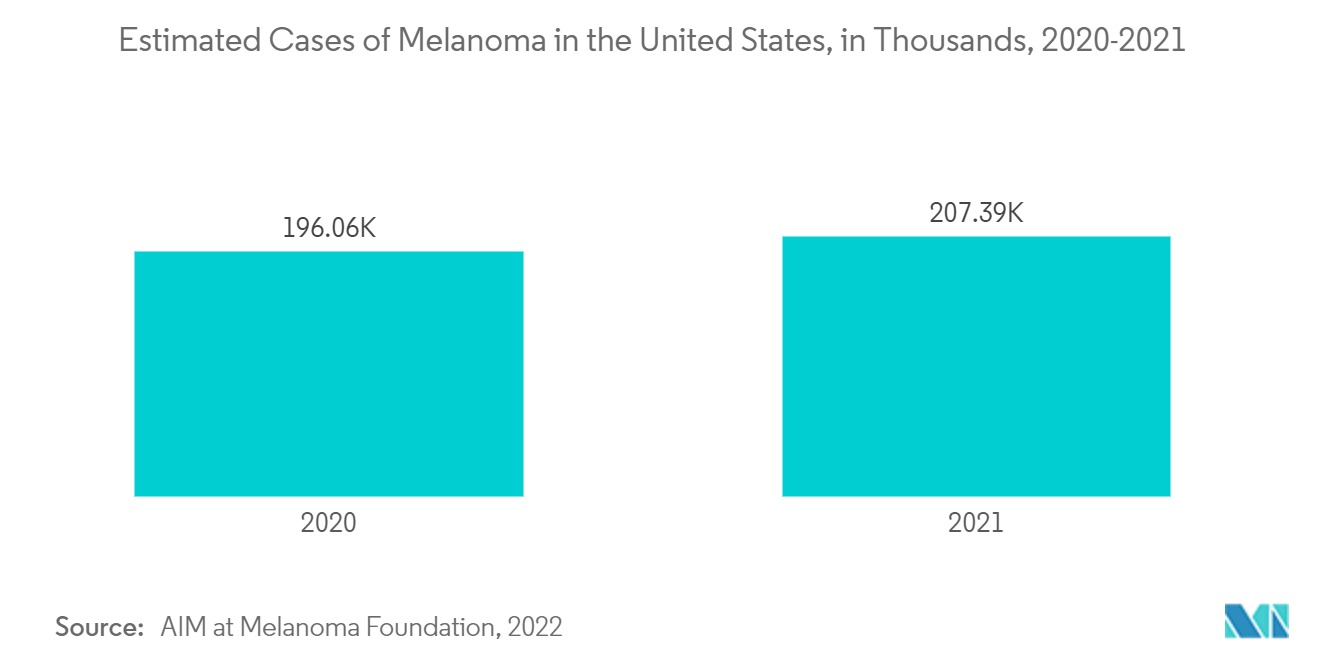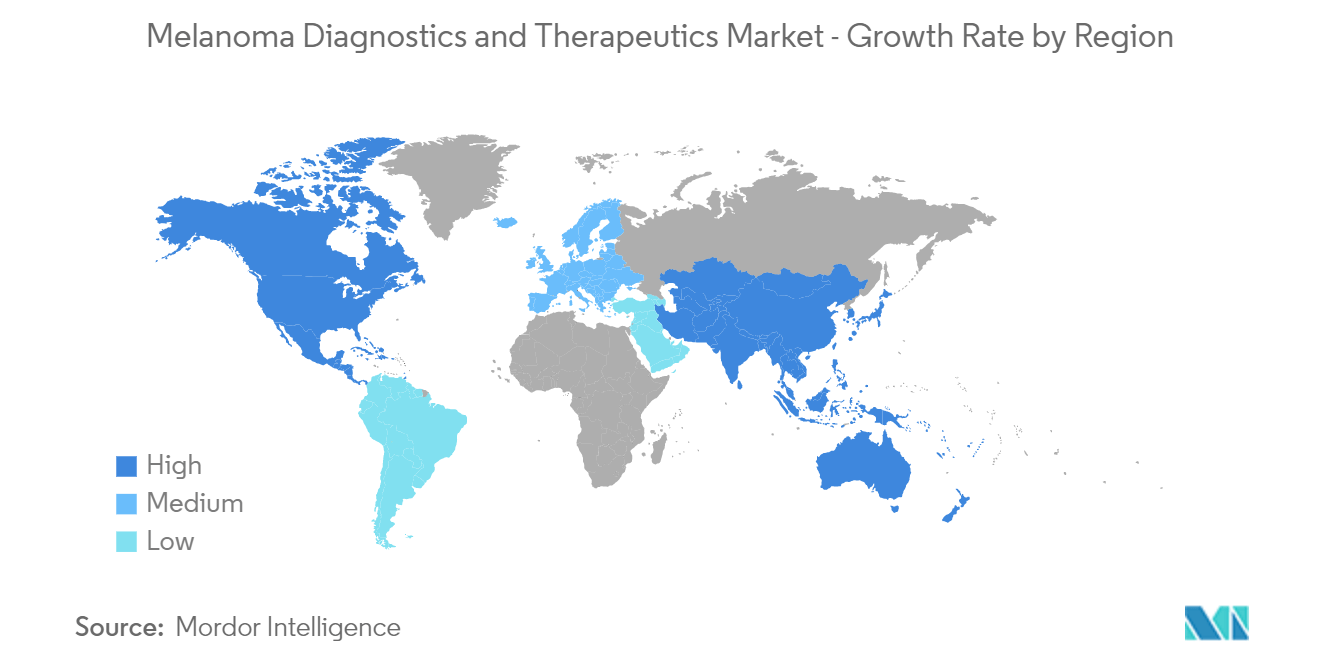Market Trends of Global Melanoma Diagnostics and Therapeutics Industry
This section covers the major market trends shaping the Melanoma Diagnostics & Therapeutics Market according to our research experts:
Immune Therapy is Anticipated to Hold Major Share in Therapeutics Segment During the Forecast Period
Immune therapy is the use of medicines to stimulate a person's immune system to recognize and destroy cancer cells effectively. Several types of immunotherapies available can be used to treat melanoma cancer.
Immunotherapy is found to hold the largest share which can be attributed to the effectiveness of drugs used in immunotherapy and an increase in their approvals. There are currently many Food and Drug Administration-approved immunotherapy options for melanoma that helps in the growth of the market. For instance, in February 2021, the United States Food and Drug Administration approved the PD-1 inhibitor Libtayo (cemiplimab-rwlc) as the first immunotherapy indicated for patients with advanced basal cell carcinoma (BCC) previously treated with a hedgehog pathway inhibitor (HHI) or for whom an HHI is not appropriate. Libtayo is now approved for patients with advanced stages of the two most common skin cancers in the United States. Also, in December 2021, the Food and Drug Administration approved pembrolizumab (Keytruda, Merck) for the adjuvant treatment of adult and pediatric (12 years of age) patients with stage IIB or IIC melanoma following complete resection.
Additionally in March 2022, The United States Food and Drug Administration approved a novel therapy for patients with metastatic or inoperable melanoma, an aggressive type of skin cancer. The treatment, developed based on original research conducted at the Johns Hopkins Kimmel Cancer Center, is comprised of two immunotherapy agents, relatlimab (anti-LAG-3) and nivolumab (anti-PD-1)There have also many advances in using immunotherapy drugs known as checkpoint inhibitors to treat melanoma.
Thus the strong emerging pipeline for melanoma treatment is expected to drive the immunotherapy segment over the forecast period.

North America is Expected to Occupy a Significant Share in the Melanoma Diagnostics and Therapeutics Market Over Forecast Period
Over the previous decade, the incidence of skin cancer has increased in North America, as has the number of skin cancer biopsies. The COVID-19 epidemic was unprecedented, and it resulted in a significant drop in non-urgent medical visits. Early in the COVID-19 epidemic, there was a significant decrease in skin biopsies. With the commencement of COVID-19 cases, a precipitous decline in total skin biopsies, biopsies for Keratinocyte carcinoma (KC), and melanoma were found, according to an Ontario-based research study titled "Impact of the COVID-19 pandemic on skin cancer diagnosis: A population-based analysis" released in March 2021. Over the next 10 weeks, there was a significant improvement in biopsy rates. However, a considerable backlog of predicted cases remained 28 weeks after lockdown, compared to 2019.
North America holds a dominant share of the market owing to the rising incidence of melanoma and other skin cancer cases in the region. According to the American Academy of Dermatology Association (AAD) updates from 2022, Skin cancer is the most common cancer in the United States. AAD also estimated that one in five Americans will develop skin cancer in their lifetime. Also, approximately 9,500 people in the United States are diagnosed with skin cancer every day. Also, according to the American Cancer Society, about 99,780 new melanomas will be diagnosed in the United States in 2022, and around 7,650 people are expected to die of melanoma in the same year. These statistics highlight the need for drugs that help in the management of melanoma over the coming years.
Additionally, in January 2022, Immunocore, a commercial-stage biotechnology company pioneering the development of a novel class of T cell receptor (TCR) bispecific immunotherapies designed to treat a broad range of diseases, including cancer received approval from the United States Food and Drug Administration (FDA) for KIMMTRAK (tebentafusp-tebn) for the treatment of HLA-A*02:01-positive adult patients with unresectable or metastatic uveal melanoma (mUM). Additionally, in May 2022, Labcorp. launched a new assay for treatment options for melanoma. The new test enables the measurement of Lymphocyte-activation gene 3 (LAG-3) expression levels by immunohistochemistry (IHC) in tumor tissue. LAG-3 is an immune-oncology target with demonstrable clinical benefit in patients with melanoma. These recent developments are expected to drive the melanoma diagnostics and therapeutics demand in the country, driving the overall market growth in the region.
Hence, as per the factors mentioned above, the skin cancer cases in the United States is anticipated to create opportunity for advanced melanoma cancer diagnostics and therapeutics, driving the overall market growth in the country.

